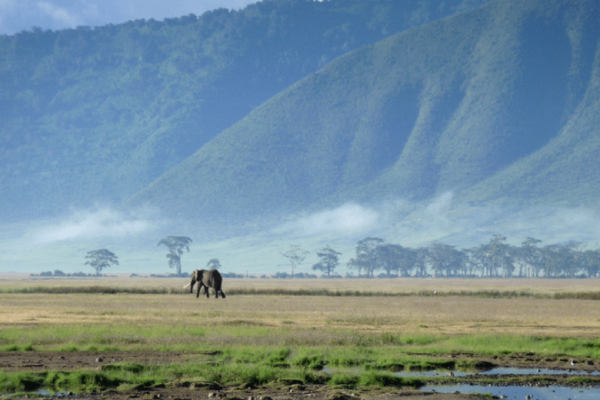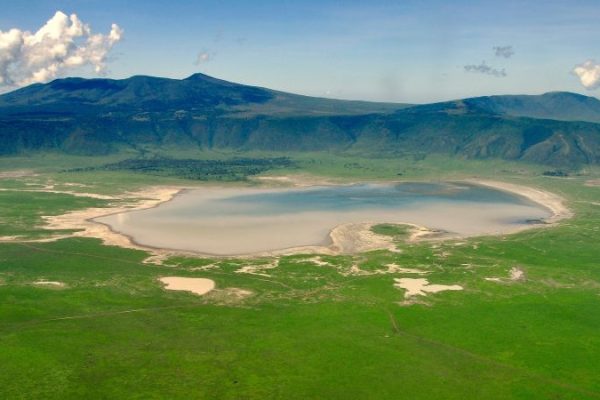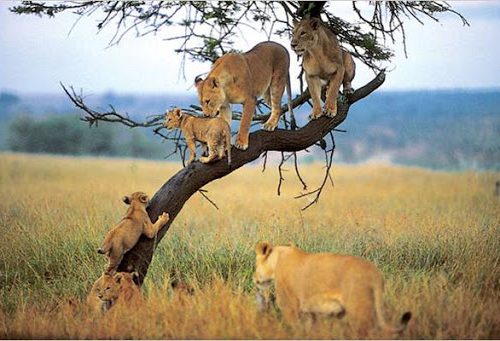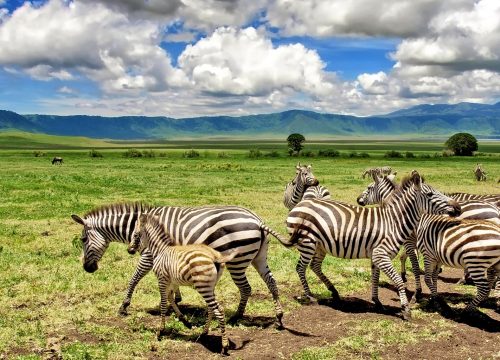Ngorongoro conservation area


Around 8300 sq. kilometers (3200 sq. miles) of prairie, bush and highland forests, including three spectacular volcanic craters, became the focus of the Tanzanian government’s imaginative solution to the problem of reconciling the needs of indigenous pastoralist tribesmen with the conservation of the area’s rich wildlife and the prospect of much-needed income from tourism. In 1979, it was announced as a UNESCO World Heritage site. It is visited by enthusiastic adventurers on their Swiss Kenya Safaris photographic safaris every year.
It is possible to see all five of the star players of the “Out of Africa” action on a single day. Some scenes of the Oscar-winning film were actually shot here, where elephant, buffalo, rhinoceros, lion and leopard are close neighbors. On your extended Ngorongoro adventurous trip with Swiss Kenya Safaris, you may also visit other volcanoes: Empakai, with its central lake set like an emerald in a jade green bowl; and Olmoti, with breathtaking waterfalls cascading 500 feet down its forested escarpment.
NGORONGORO CONSERVATION AREA HILIGHTS
WHY VISIT THE NGORONGORO
Firstly, the area is Highly accessible from the main tourist city, Arusha.
Ngorongoro Conservation Area is reasonably close to Arusha, the main safari hub of Tanzania’s northern circuit safaris. It is only a 3hrs drive (170 km) down to Ngorongoro from Arusha.
World heritage site.
It is a dream of every traveller to go to as many world heritages sites as he/she can. Ngorongoro Conservation Area, is a UNESCO World Heritage Site since the year of 1979. Its main features are the astonishing Ngorongoro crater which is famous for being the largest inactive and intact volcanic caldera in the whole world, shifting sand, culture and history of the people as well as oldupai Gorge.
Abundance of biodiversity/landscapes.
Ngorongoro Conservation Area host a wide range of the world’s threatened species and incredibly dense wildlife. This gives travellers a chance to appreciate, experience and spot many animals including the ‘Big Five’.
The crater is also home to many lions, leopards and hyenas. Apart from the big five, other popular animals in the area are herds of buffalo, wildebeest, zebra, endangered black rhinos and variety of bird species.
WHAT TO DO IN NGORONGORO CONSERVATION AREA
Wildlife exploration.
Ngorongoro crater is filled with over 2500 animals starting with the herbivores, carnivores and birds. This makes it to be ideal ground for the African safari lovers.
It is possible to encounter the big five just within a single day during the Ngorongoro crater tour.
Ngorongoro conservation area can be visited throughout the year. But the best time which one can enjoy this magnificent area is during the dry season. This is because animal can be seen easily.
Visiting Olduvai Gorge.
In this Gorge there is a museum that displays the history and information about the skull of early man around the Olduvai Gorge.
You will observe the Olduvai gorge from a higher vantage point, although there are other more beautiful parts of the gorge that you can get to via a short drive or walk – such as the large Olduvai (olduvai kubwa).
Shifting Sand.
A semi-circular shaped black dune, composed of volcanic ash from the nearby volcanic mountain – Oldoinyo Lengai, that is moving slowly westwards across the Ngorongoro plains at a rate of about 15 to 20 metres per year.
The local Maasai people believe the shifting sand dunes have come from the nearby holy mountain Ol Doinyo Lengai, loosely translated as the Mountain of God (where God resides).
As a consequence, these dunes are also considered sacred by the Maasai, who convene by the dunes in cases of prolonged draught. On these occasions, a goat is sacrificed to the gods so that rain may come soon.
Walking on the footprints of ancestors (LAETOLI).
Laetoli is a remote location but it is a not to miss adventure. Laetoli is home to a 27m long trail of hominid (ancestors of humans) footpaths that were left here over 3.7 million years ago.
This is the best place for you to come close to our ancestors, and marvel at how far humans have come since our humble beginnings.
Laetoli’s remote location makes it an incredibly adventurous place to visit as well- so even if you’re not a history buff, this is definitely a bucket list destination.
Empakaai crater.
You will love this place at the first sight. The alkaline lake in the middle of the crater with flock of flamingos is surrounded by the steep forest walls of the caldera. Beyond it, is decorated with stunning view of the only active volcanic mountain in Tanzania, the Ol Doniyo Lengai.
The lake is fenced by lush green forests with fig trees, blue monkeys, and colorful birds. You can also find buffalos, bush bucks and water bucks, and pink flamingos here.
Bird watching.
The Ngorongoro conservation area is considered as a bird paradise. The area has variety of bird species which make it to be the best spot for bird watching. The area supports variety of birds such as kori bustard, larks, fiches and raptors.
Featured Ngorongoro Conservation Area Tours
- Quality4.67
- Location4.67
- Amenities4.67
- Services5
- Price4.33
7 Days Tarangire - Lake Manyara and Ngorongoro Migration Calving Safari
- Quality4.67
- Location4.67
- Amenities4.67
- Services5
- Price4.33
7 Days Tarangire - Lake Manyara - Serengeti & Ngorongoro Crater Safari
- Quality4.67
- Location4.67
- Amenities4.67
- Services5
- Price4.33



